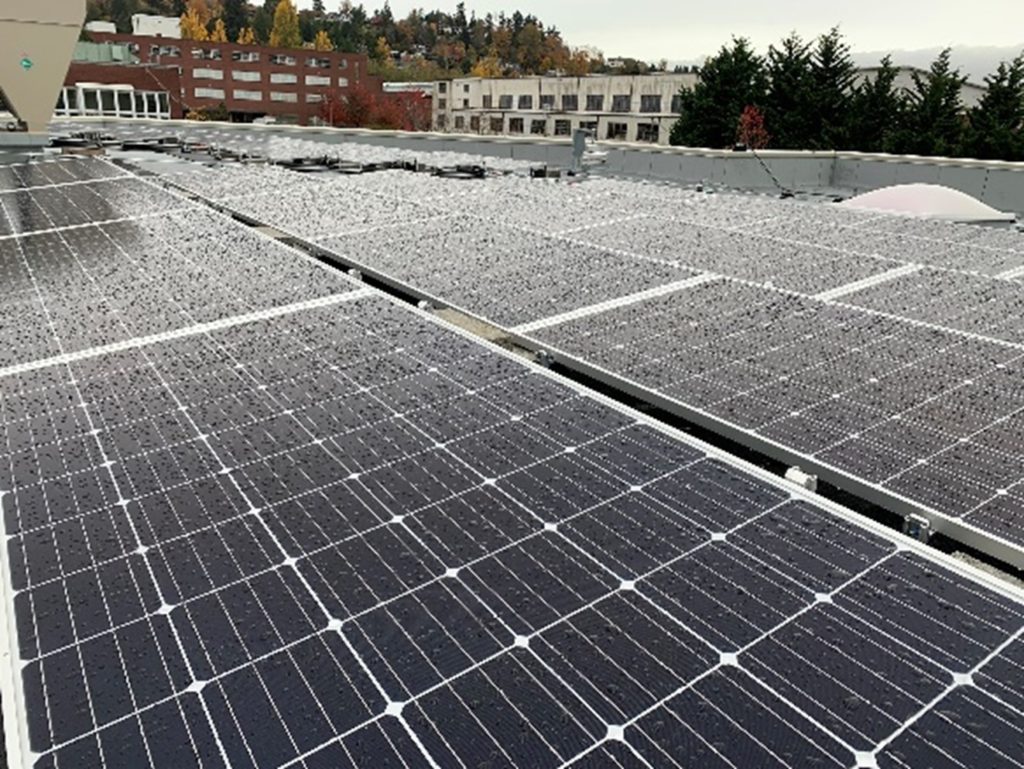
By Todd Burley and Jacob Daley
The world is warming, the climate is changing, and humans are the cause of this shift of geologic proportions. The science is clear, as detailed in the latest report from the Intergovernmental Panel on Climate Change. “Global warming is likely to reach 1.5°C between 2030 and 2052 if it continues to increase at the current rate.” And Seattle has signed on to the Paris Climate Agreement, committing to doing our part to reduce carbon emissions. So how is Seattle Parks and Recreation rising to this challenge?

First, we are reducing energy consumption at our existing facilities, by increasing efficiencies as well at switching to the carbon-neutral electricity provided by Seattle City Light. As part of the City’s Building Tune-Up Program we are sealing building envelopes and adding insulation to keep the heat in. In addition, SPR is installing efficient LED lights everywhere possible, including at our athletic fields and aquatic facilities. SPR is also installing heat pump systems and more efficient heat systems at our facilities, working to remove natural gas where possible.
We know that our largest sources of emissions are the heating systems we have in our facilities. In fact, indoor pools alone contribute to 50% of SPR’s CO2 emissions, because they take a lot of energy and it primarily comes from natural gas. To reduce these emissions, we are installing heat recovery systems for all our indoor pools. This will save an estimated 2.1 million kBTUs per year, and about $20,000 annually at each pool!


Seattle is lucky to have a carbon-neutral electricity source, making the shift to electricity an obvious choice to reduce our carbon emissions. However, we are also pursuing alternative energy sources such as solar power at our facilities.
At the Magnuson Park “Brig” building, SPR partnered with the Office of Sustainability and the Environment and Seattle City Light (SCL) to install an extensive photovoltaic system on the roof that we expect to produce about 50,000 KWH annually.
We also partnered with SCL to install a solar microgrid system at Miller Community Center this year, creating an independent (and carbon-neutral) energy source to be used in the case of an emergency.
Climate change is real, and Seattle Parks and Recreation is doing our part to reduce our carbon footprint in our facilities. This process will take many years to complete, but as a long-term manager of dozens of buildings, SPR is committed to going carbon neutral. The imperative is clear that we must act.